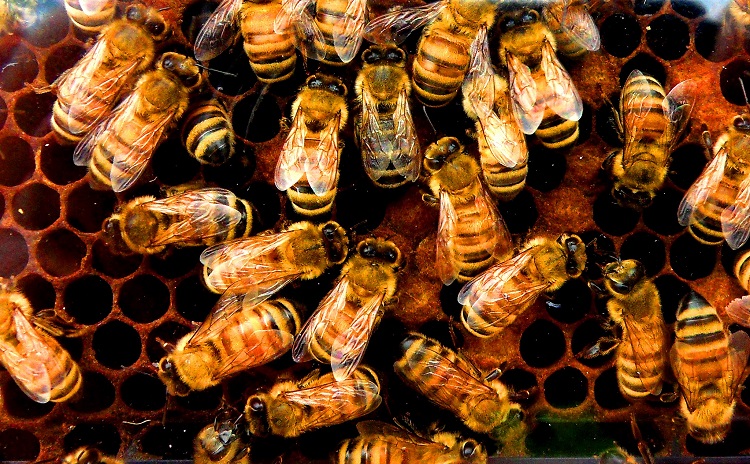Floral Smells Stop Stinging Bees

(Inside Science) -- As an amateur beekeeper, I'm resigned to getting more than my fair share of painful stings when harvesting honey, or even cutting the grass too close to the hive. But new research published today in Nature Communications shows that there may be a way to distract angry and defensive bees and reduce the number of times clouds of vengeful insects send me fleeing to the house.
Bees attack when they feel their hive is under threat. As each defender stings the invader, they release a chemical called the sting alarm pheromone that recruits their sisters to come to the hive's defense. So after you've been stung once, the attacks keep coming until the bees are satisfied that you are no longer a threat.
Morgane Nouvian, a Ph.D. student at the University of Queensland in Brisbane, Australia, wanted to find out whether other smells might interfere with the pheromone and reduce stings. She put pairs of bees in a specially designed arena with a threatening dummy – a black leather pad with a rotating feather – and recorded how many times they stung it.
"It combines all of the stimuli that bees perceive as threatening," she said. "It's black, it's moving, it's fuzzy."
She then wafted in various odors to see how they affected the bees' aggression. When Nouvian added the main component of the alarm pheromone, a chemical called isoamyl acetate (IAA), the bees became much more aggressive and stung the dummy more often than without IAA. She then added common floral scents, along with IAA. With two of them – 2-Phenylethanol (PhE) and Linalool (Lol), common scents found in almost all flowers – the bees acted almost as if there was no IAA present, stinging far fewer times.
Nouvian also tested the scents in the wild. When PhE or Lol was blown into the entrance of a hive, fewer bees attacked a leather flag flapping near the front.
"It's not perfect, we think the bees that are still stinging are the ones that are more sensitive to visual stimulus, but it prevents them from recruiting others so you only get one sting instead of ten," she said.
Interestingly, Nouvian found that the floral scents are not masking or blocking the IAA – the bees could still distinguish both odors in the mixture but did not react to the alarm signal. "We showed that they choose not to respond, not that they can't smell the IAA," she says.
This suggests that the bees weigh up various different inputs, such as the state of the hive, the magnitude of the threat and the presence of food when deciding whether to attack. Which makes sense, since stinging is a serious proposition for a honeybee – they only get to sting once, and it kills them. A floral odor may reduce aggression by suggesting that the bee is far from the hive, when stinging would not be a useful response.
Ramesh Sagili, a bee researcher at Oregon State University in Corvallis, said he is not surprised that attractive floral scents can affect stinging behavior. He said it makes sense that bees would weigh the costs and benefits of stinging before they act, and that the floral scents could confuse them by presenting conflicting information that leads them to think stinging is not the right response.
Nouvian said that beekeepers could possibly use floral scents like Lol to protect themselves when working on their hives, as an alternative to the smoke often used today.
"The floral odors work because the bees like them, while the smoke works because they don't like it, so it could be less stressful for them," she said.
Sagili thinks it could be useful to have something that reliably protects beekeepers from stings, especially where highly aggressive and sometime dangerous Africanized bees are spreading in the southern United States. The trick, he said, will be to find a way to make sure the dose is right, and that the scent doesn't dissipate too quickly.
And while my own bees are nowhere near as uppity as the Africanized varieties, I would happily invest in something that reduces the number of stings I get in a summer. One or two I can deal with, but ten or twenty all at once is more than I bargained for.

